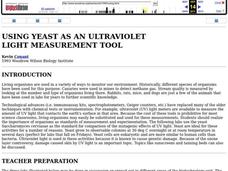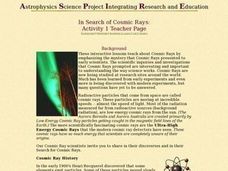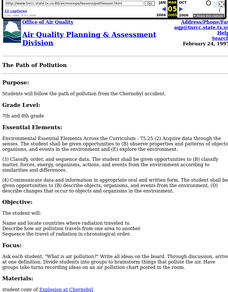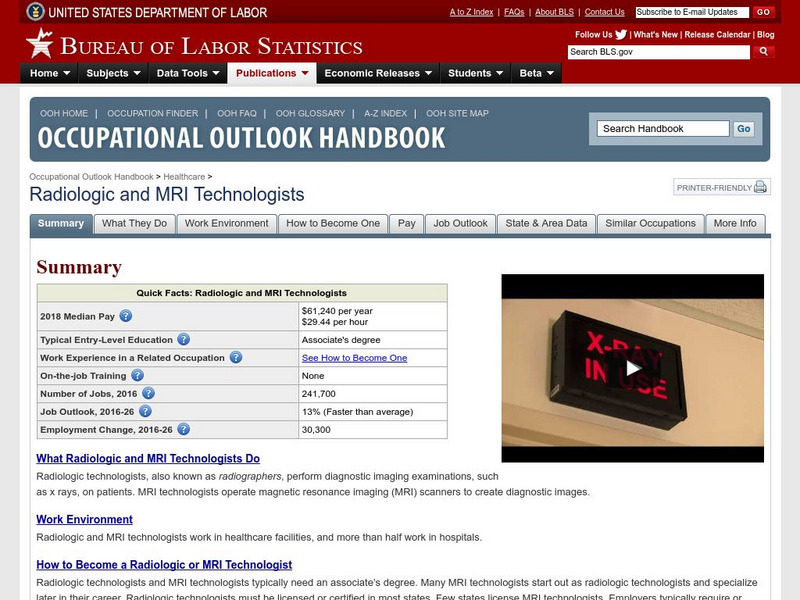Curated OER
Convection Currents
Students explain and understand the circulation of air in the atmosphere. They identify that energy can be carried from one place to another by heat flow or by waves, including water, light and sound waves, or by moving objects. ...
Curated OER
Photosynthetically Available Radiation (PAR) Measurements Part 1: Calculating the Solar Constant using a TI-8
Twelfth graders are introduced to the term Photosynthetically Available Radiation. In groups, they participate in an experiment to determine how ecosystems survive the conditions in the Arctic. They calculate the amount of solar energy...
Curated OER
Hazardous Waste
Students define technology and relate the definition to the production of electricity using nuclear energy. They also list the technologies involved and relate the use of these technologies to their effect on society in general, and...
Curated OER
Heat Transfer
Eighth graders form teams. Students place a thermometer in ball of clay and place in an insulated cup filled with hot water and then another thermometer in a ball of clay in an insulated cup of cold water. Students record temperature...
Curated OER
Insulation-Black and White
Eighth graders construct 2 different model homes out of manila folders in order to examine how heat is transferred by means of radiation and convection. Activity allows students to interpret how different colors or material affect the...
Curated OER
UV Radiation and the Developmental Stages of Red Flour Beetles
Students perform an experiment to compare the sensitivity of the various developmental stages of Red Flour Beetles to ultraviolet radiation. Larvae, pupae and adult beetles are exposed to a source of UV-B radiation. In groups, they...
Curated OER
Using Yeast as an Ultraviolet Light Measurement Tool
Students accurately measure the relationship between radiation dose and either survival or some genetic event such as mutation or recombination. They investigate the damage that was done to the DNA molecule as a result of exposure to...
Curated OER
Teaching Biology Through Problem-based Activities
Students plant seeds and observe the life cycle of the organism. They experimentally research the effects of radiation on seed growth. Students determine the effects of environmental pollutants on harvested seed.
Curated OER
Jupiter's Moons
Learners predict which of Jupiter's moons will be the "brightest" in infrared wavelengths. Using provided information, they rank the moos from brightes to faintest in infrared.
Curated OER
What Repair Proteins are Expressed in C-Ferns After Exposure to Varying Amounts of UV Radiation?
Students examine the life cycle of c-ferns. They complete experiments on the organisms exposing them to differnet amount of UV radiation. They collect data and analyze their results.
Curated OER
How Much Radiation is Around You?
Middle schoolers examine the use, misuse and fear of radiation. They read an article about radiation on food and discuss the positives and negatives of this process. They answer questions to complete the lesson.
Curated OER
How Does Radiation Affect You?
Young scholars identify the use and misuse of radiation. They examine human activities that add to the exposure of radiation. They also discover how it can be useful in saving lives.
Curated OER
How Hot Is It?
Sixth graders use paper cups, black and white lining, thermometers and plastic wrap to conduct an experiment that measures the energy-collecting capacity of various colors. They graph the results.
Curated OER
Collecting Electromagnetic Radiation
Students using different experiments and activities explore electromagnetic radiation and the effect on the Earth.
Curated OER
In Search of Cosmic Rays
Middle schoolers compare rates to altitude. They conduct a class discussion about the results.
Curated OER
The Path of Pollution
Students follow the path of pollution from the Chernobyl accident. Students name and locate countries where radiation traveled to, describe how air pollution travels from one area to another, and seqence the travel of radiation in...
National Institutes of Health
Nih: Cell Biology and Cancer
An online resource for teachers that provides inquiry-based modules for students to reseach cancer in an interesting and personalized way. Includes master copies of each module for teachers.
Georgia Department of Education
Ga Virtual Learning: Physical Science: Nuclear Chemistry
A complete learning module with interactive activities as well as informational text to help students distinguish the characteristics and components of radioactivity.
Idaho State University
Idaho State University: Radioactive Waste Management
A learning module will dig into radiation and examine radioactive waste. Recognize the types of waste and how they are managed.
PBS
Pbs Learning Media: Everyday Radiation
How much radiation are we exposed to every day? Find out in this video segment adapted from FRONTLINE: "Nuclear Reaction." [1:46]
PBS
Pbs Learning Media: Nuclear Blast Damage
This illustrated document from the AMERICAN EXPERIENCE Web site examines the "zones of destruction" caused by nuclear weapons.
US Department of Labor
Bureau of Labor Statistics: Radiologic Technician
Published by the Department of Labor, this site details the Radiologic Technician Career. Employment outlook, and projections are provided with training and qualifications data.
US Environmental Protection Agency
Epa: Envirofacts Data Warehouse
Using zip codes, this site allows students to locate businesses in their communities that are producing wastes.
University of Colorado
University of Colorado: Ph Et Interactive Simulations: Alpha Decay
Watch alpha particles escape from a polonium nucleus, causing radioactive alpha decay. See how random decay times relate to the half life. Java required.























